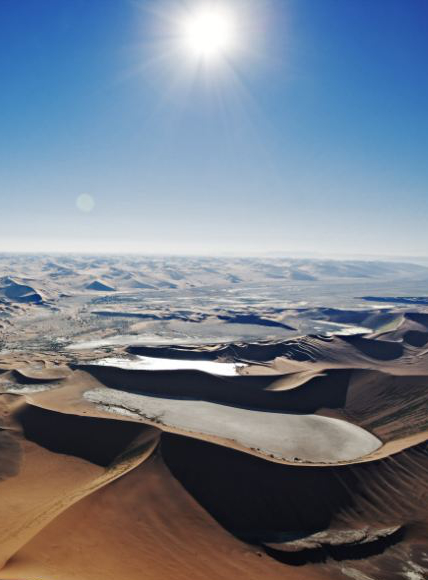Dry times to drive massive displacement
 Experts say that as dry days increase and water supplies disappear, large part of the Middle East and North Africa will become unliveable.
Experts say that as dry days increase and water supplies disappear, large part of the Middle East and North Africa will become unliveable.
The number of extremely hot days in the Middle East and North Africa has doubled since 1970, putting the future in jeopardy for the 500 million people that live there.
The exodus of this many people would have untold effects on human populations and remaining habitable environments.
Experts from Germany’s Max Planck Institute investigated how temperatures will develop in the Middle East and North Africa over the course of the 21st century, and their results are deeply alarming.
Even if Earth's temperature were to increase on average only by two degrees Celsius compared to pre-industrial times, the temperature in summer in these regions will increase more than twofold.
By mid-century, during the warmest periods, temperatures will not fall below 30 degrees at night, and during daytime they could rise to 46 degrees Celsius.
By the end of the century, midday temperatures on hot days could even climb to 50 degrees Celsius, and there will be 80 instead of 16 extremely hot days.
Additionally they find that heat waves could occur ten times more often than they do now.
“If mankind continues to release carbon dioxide as it does now, people living in the Middle East and North Africa will have to expect about 200 unusually hot days, according to the model projections,” says Associate Professor Panos Hadjinicolaou.
Atmospheric researcher Jos Lelieveld is convinced that climate change will have a major impact on the environment and the health of people in these regions.
“Climate change will significantly worsen the living conditions in the Middle East and in North Africa. Prolonged heat waves and desert dust storms can render some regions uninhabitable, which will surely contribute to the pressure to migrate,” Lelieveld says.
The research team recently published findings on the increase of fine particulate air pollution in the Middle East, which found that desert dust in the atmosphere over Saudi Arabia, Iraq and in Syria has increased by up to 70 per cent since the beginning of this century.
This is mainly attributable to an increase of sand storms as a result of prolonged droughts, and is expected to be exacerbated by increased climate variability.
In their latest study, Lelieveld and his colleagues compared climate data from 1986 to 2005 with predictions from 26 climate models over the same time period.
They found that the measurement data and model predictions corresponded extremely well, so they used these models to project climate conditions for the period from 2046 to 2065 and the period from 2081 to 2100.
In a number of modelled scenarios, the strongest rise in temperature in the Middle East and North Africa is expected during summer, primarily attributed to a desert warming amplification in regions such as the Sahara.
Deserts do not buffer heat well, which means that in particularly hot and dry periods the surface cannot be cooled by evaporating of ground water.
Since the surface energy balance is controlled by heat radiation, the greenhouse effect by gases such as carbon dioxide and water vapour will increase disproportionately.
Regardless of which climate change scenario becomes reality: both Lelieveld and Hadjinicolaou agree that climate change can result in a significant deterioration of living conditions for people living in North Africa and the Middle East, and consequently, sooner or later, many people may have to leave the region.








 Print
Print